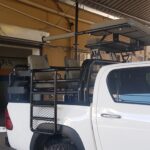I. Introduction to CNC Technology in Classic Car Restoration
II. Benefits of Re-manufacturing Classic Car Dashboards with CNC
III. The Process of CNC Machining Classic Car Dashboards
Introduction to CNC Technology in Classic Car Restoration
Classic car restoration is more than just a hobby; it’s a passion that brings together enthusiasts from all walks of life. Whether you’re a seasoned restorer or just dipping your toes into the world of vintage automobiles, you’ve probably noticed a surge in advanced technologies that can help breathe new life into these beloved machines. One of the most transformative innovations is CNC technology, or Computer Numerical Control, which is making waves in the restoration community.
So, what exactly is CNC technology? In simple terms, it’s a method that uses computerized controls to operate tools and machinery. This means that instead of relying solely on manual labor and traditional techniques, restorers can harness the precision and efficiency of machines to recreate and enhance car parts. Think of it as the marriage between old-school craftsmanship and cutting-edge technology!
Why Is CNC Technology a Game-Changer?
Many classic car enthusiasts might wonder why they should embrace CNC technology when they could just rely on traditional methods. Here are a few compelling reasons to consider:
- Precision: CNC machines are incredibly accurate. They can replicate complex shapes and designs to a tolerance of mere fractions of a millimeter. This level of precision is crucial when restoring classic cars, where even the smallest details can make a big difference.
- Efficiency: Time is often of the essence in restorations, and CNC technology can significantly speed up the manufacturing process. What might take weeks or even months by hand can be achieved in a fraction of the time through CNC machining.
- Reproducibility: If you need multiple copies of a certain part, CNC machines can produce them consistently. This is especially useful for restorers looking to replace multiple components or for those who might want to sell parts to fellow enthusiasts.
- Customization: Unlike mass-produced parts, CNC technology allows for personalized touches. Want to engrave your initials on a dashboard or create a unique design? CNC machining makes it possible.
For many, the allure of classic cars lies in their unique history and character. However, as these vehicles age, sourcing original parts becomes increasingly difficult. That’s where CNC technology steps in, allowing restorers to create new components that fit perfectly and maintain the car’s integrity.
Bridging the Gap Between Old and New
By blending traditional restoration techniques with modern CNC technology, restorers can ensure that classic cars not only retain their nostalgic charm but also meet the demands of today’s driving standards. It’s a beautiful combination of honoring the past while embracing the future.
As we venture further into this exciting journey of restoration, it’s essential to keep an open mind about how technology can assist in this age-old craft. Whether it’s using CNC for dashboards, trim pieces, or intricate detailing, embracing these tools can elevate any restoration project, ensuring that classic cars can continue to be admired for generations to come.
Benefits of Re-manufacturing Classic Car Dashboards with CNC
When it comes to classic car restoration, the dashboard is often one of the most iconic elements. It’s not just about functionality; it’s a vital part of a car’s character and nostalgia. That’s where CNC (Computer Numerical Control) technology comes into play, offering a range of benefits that can truly elevate the restoration process. So, let’s dive into how CNC machining can breathe new life into those classic dashboards!
1. Precision at Its Best
One of the standout advantages of using CNC for re-manufacturing dashboards is the unparalleled precision it offers. Unlike traditional methods, CNC machines can create intricate designs with remarkable accuracy. This means that the new dashboard will fit perfectly into the classic car, ensuring that everything aligns just right. No more awkward gaps or misaligned panels—just seamless integration!
2. Consistency Over Time
Another fantastic benefit is the consistency that CNC machining brings to the table. When you produce multiple dashboards, each one can be an exact replica of the last. This is crucial for restorers who need to replace several components or are working on multiple vehicles. Imagine being able to guarantee that every dashboard you create maintains the same level of quality and detail—it’s a game-changer!
3. Material Versatility
CNC machines can work with a variety of materials, from wood to aluminum and even high-tech composites. This versatility opens up a world of possibilities for restorers. Want that classic oak wood finish for your vintage dashboard? No problem! Prefer a sleek aluminum look? You’re covered! This adaptability allows for more personalized restoration that can truly reflect the car owner’s vision.
4. Efficiency and Time-Saving
Let’s talk about efficiency. CNC machining significantly reduces the time it takes to produce a dashboard. Traditional methods often involve extensive labor and time-consuming processes. CNC technology streamlines these tasks, allowing restorers to focus on other essential parts of the vehicle without sacrificing quality. And who doesn’t want to speed up their project while enjoying the process?
5. Enhanced Durability
Another perk of CNC-manufactured dashboards is their durability. Because CNC machines can work with high-quality materials and create precise cuts, the final product tends to be sturdier than ones made using more conventional methods. This means your classic dashboard can withstand the test of time, even if you take it out for a spin now and then!
6. Eco-Friendly Options
In an era where sustainability matters, CNC technology can also contribute to more eco-conscious practices. Many CNC machines are designed to minimize waste and make the most of the material used. This not only reduces costs but also lessens the environmental impact—an added bonus for restorers who want to be responsible stewards of the classic cars they love.
Conclusion
By embracing CNC technology in the restoration of classic car dashboards, you unlock a treasure trove of benefits. From precision and consistency to durability and efficiency, CNC machining is not just a tool; it’s a restoration partner that can help bring your vintage dreams to life. So, the next time you’re considering a dashboard overhaul, remember these perks and think about how CNC can elevate your project!
The Process of CNC Machining Classic Car Dashboards
So, you’ve decided to breathe new life into your classic car by re-manufacturing the dashboard using CNC technology. Smart choice! But how does the process actually work? Let’s break it down step by step in a way that makes it easy to understand.
1. Designing the Dashboard
The first step in CNC machining is creating a precise design. This isn’t just about picking a cool shape; it’s about ensuring that every detail is perfect. Here’s how it goes:
- Scans and Measurements: If you have the original dashboard, the first thing to do is take detailed measurements or even scan the existing piece. This helps create a digital model that captures every curve and contour.
- 3D Modeling: Using CAD (Computer-Aided Design) software, the scanned data is transformed into a 3D model. This model serves as the blueprint for the CNC machine, so attention to detail is crucial!
2. Choosing the Right Materials
Next up is selecting the right materials for your dashboard. While traditional dashboards might have been made from wood or plastic, CNC machining allows you to explore a variety of materials:
- Aluminum: Lightweight and durable, aluminum is a popular choice for a sleek and modern look.
- Wood: For a classic feel, you can choose high-quality wood materials that can be finely machined.
- Composite Materials: These can combine several elements to achieve strength while keeping the weight down.
3. Setting Up the CNC Machine
Now that you have your design and materials, it’s time to set up the CNC machine:
- Loading the Material: The selected material is securely loaded onto the CNC machine bed to prevent any movement during machining.
- Programming the Machine: The CAD model is translated into machine-readable code, also known as G-code. This code instructs the CNC machine on how to cut, shape, and finish the dashboard.
4. Machining Process
With everything set up, the machining process begins:
- Cutting: The CNC machine uses various cutting tools to carve out the dashboard from the material. This is where the magic happens! It’s precise, efficient, and can create incredibly complex shapes.
- Finishing Touches: After the main structure is formed, additional processes like sanding, polishing, and drilling for gauges and controls are executed to ensure everything looks sharp and functions perfectly.
5. Quality Control
No dashboard is complete without a thorough quality check. After machining, the dashboard is inspected to ensure it meets all specifications and standards:
- Fitting: It’s essential to test-fit the dashboard in the vehicle to confirm that all elements align perfectly.
- Testing: If applicable, electronic components are tested to ensure they work seamlessly with the new dashboard.
And there you have it! The CNC machining process for classic car dashboards is a blend of art and technology, bringing together the best of both worlds. Whether you’re a DIY enthusiast or working with professionals, knowing this process can help you appreciate the craftsmanship behind your stunning new dashboard. Happy restoring!










Comments